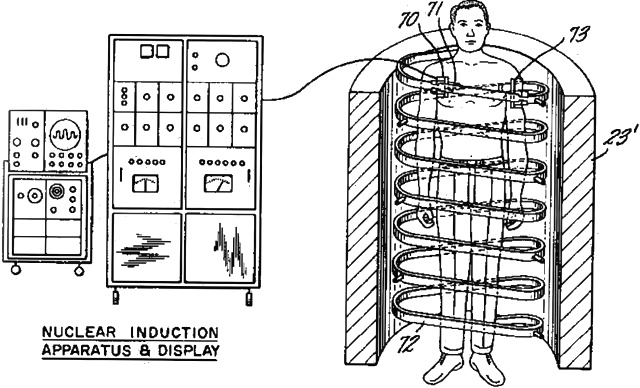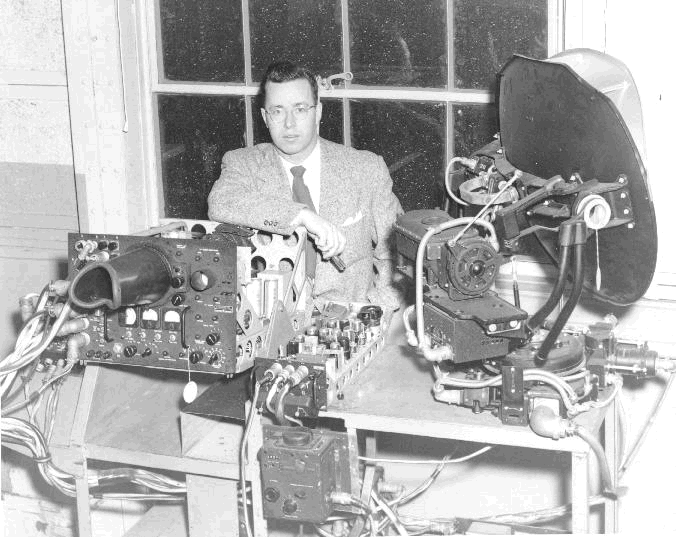The cerebrum or telencephalon, together with the diencephalon, constitutes the forebrain. The cerebrum is the most anterior (or, in humans, most superior) region of the vertebratecentral nervous system. Telencephalon refers to the embryonic structure, from which the mature cerebrum develops. In mammals, the dorsal telencephalon, or pallium, develops into the cerebral cortex, and the ventral telencephalon, or subpallium, becomes the basal ganglia. The cerebrum is also divided into approximately symmetric left and right cerebral hemispheres.
With the assistance of the cerebellum, the cerebrum controls all voluntary actions in the body.
(Serebrum, cerebrum ya da telensefalon beynin en büyük ve en üst kısmında bulunan merkezi sinir sistemi bölümü. Sağ ve solda bulunan hemisferler corpus kollosum ile birbirleriyle bağlantı kurar. Serebrumun en dış kısmına serebral korteks denir.
Kompleks hareketlerin organizasyonu, öğrenilen deneyimlerin hafızada saklanması, duyusal bilgilerin alınması gibi görevleri vardır.) Beyin
Radio is the transmission of signals through free space by modulation of electromagnetic waves with frequencies below those of visible light.[1] Electromagnetic radiation travels by means of oscillating electromagnetic fields that pass through the air and the vacuum of space.
Information is carried by systematically changing (modulating) some property of the radiated waves, such as amplitude, frequency, phase, or pulse width. When radio waves pass through an electrical conductor, the oscillating fields induce an alternating current in the conductor. This can be detected and transformed into sound or other signals that carry information. [The etymology of "radio" or "radiotelegraphy" reveals that it was called "wireless telegraphy", which was shortened to "wireless" in Britain. The prefix radio- in the sense of wireless transmission, was first recorded in the word radioconductor, a description provided by the French physicist Édouard Branly in 1897. It is based on the verb to radiate (in Latin "radius" means "spoke of a wheel, beam of light, ray"] http://encyclopedia2.thefreedictionary.com/radio+interface
(Radyo, elektromanyetik radyo dalgalarındaki ses modülasyonunu önce elektronik ortama sonra dasese çeviren elektronik alet. Türk Dili dergisinde Kırgız Türkçesinde radyo anlamında kullanılanүналгы /ünalgı/ sözünün Türkiye Türkçesinde kullanılması da gündeme getirilmiştir. Radyolar (radyo alıcıları) elektromanyetik tayfın belli bir aralığını dinlemek üzere tasarlanır. Radyonun seçicilik ve hassaslık faktörlerine göre kalitesini değerlendirmek mümkündür - Q faktörü.)
GPS (Global Positioning System; Küresel Konumlama Sistemi), düzenli olarak kodlanmış bilgi yollayan bir uydu ağıdır ve uydularla arasındaki mesafeyi ölçerekDünya üzerindeki kesin yeri tespit etmeyi mümkün kılar.
Bu sistem, ABD Savunma Bakanlığı'na ait, yörüngede sürekli olarak dönen uydulardan oluşur. Bu uydular radyo sinyalleri yayarlar ve yeryüzündeki GPS alıcısı bu sinyalleri alır. Böylece konum belirlenmesi mümkün olur.
Bu sistemin ilk kuruluş hedefi tamamen askeri amaçlar içindi. GPS alıcıları yön bulmakta, askeri çıkartmalarda ve roket atışlarında kullanılmak üzere tasarlanmıştır. Ancak, 1980'lerde GPS sistemi sivil kullanıma da açılmıştır.
Yapay uydular insanoğlunun geliştirip Dünya'nın veya başka gezegenlerin yörüngesine yerleştirdiği uydulardır. Bu uydular genellikle yarı-bağımsız bilgisayar kontrollü sistemlerdir.
1957'de SSBC tarafından fırlatılan ilk yapay uydu olan Sputnik 1'den beri, binlerce yapay uydu Dünya'dan fırlatılmıştır. Bu uyduların her birinin belli bir amacı vardır. Yapay uyduların amaçlarından bazıları şunlardır:
- Haberleşme uyduları: TV, radyo, telefon gibi iletişim araçlarını kullanabilmek için uzaya gönderilmiş uydulardır. Modern haberleşme uyduları çoğunlukla "Molniya" veya "Alçak Dünya" yörüngelerini kullanırlar.
- Meteoroloji uyduları: Bu uydular dünyadaki meteorolojik olayları gözlemlemek için kullanılırlar.
- Anti-uydu silah sistemleri: "Katil uydular" olarak da bilinen bu uyduların amaçları düşman uydularını yok etmektir. Düşman uyduları vurmak için kinetik mermiler ya da enerji veya partikül silah sistemleri kullanırlar.
- Astronomi uyduları: Uzaydaki diğer gökcisimlerini gözlemek amacıyla kullanılırlar.
- Biyouydular (Biosatellites): Bilimsel amaçlarla canlı organizmalar taşıyan uydulardır.
- Minyatür uydular: Çok çeşitli amaçlarla kullanılabilen sıradışı şekilde ufak cüsseli uydulardır. 500–100 kg arasında olanlara "miniuydu", 100–10 kg arasında olanlara "mikrouydu", 10 kg'dan daha hafif olanlara "nanouydu" denir.
- Seyrüsefer uyduları (Navigasyon uyduları): Radyo sinyalleri vasıtasıyla dünya üzerindeki mobil cihazların yerlerini GPS sayesinde tespit etmeye yarayan uydulardır. Günümüzde uçaklarda, otomobillerde hatta elde kullanımı oldukça yaygınlaşmış olan sistem. sayesinde dünya üzerindeki konum birkaç metre hassasiyetiyle tespit edilebilir.
- Gözetleme uyduları (Reconnaissance satellites): Daha çok askeri gözetleme ve keşif amaçlarıyla kullanılan bu uyduların gerçek kabiliyetleri konusunda detaylı bir bilgi mevcut değildir. Bunun nedeni, bu sistemlere dair bilgilerin "çok gizli" gizlilik derecesinde olmasıdır.
- Gözlem uyduları (Earth observation satellites): Bu uydular sivil gözlem amacıyla (çevre faciaları, harita yapımı vs.) kullanılan uydulardır.
- Güneş enerjisi uyduları: Bu uydular güneş enerjisini dünya üzerindeki alıcılara yönlendirerek, alternatif enerji kaynağı olarak kullanılması planlanan uydulardır.
- Uzay istasyonları: Uzay istasyonları, üzerinde insanların yaşaması için inşa edilmiş yapılardır. Günümüzde bilimsel amaçlarla kullanılan bu yapılar astronotların yıllarca barınmasına imkân verebilmektedir. Bu istasyonlar uzay taşıtı değillerdir ve iniş-kalkış kabiliyetleri yoktur. Bu istasyonlara gidiş geliş diğer uzay taşıtları vasıtasıyla sağlanır.
Uzaktan kumanda elektronik cihazların, yaygın olarak televizyonların, kısa mesafelerde uzaktankontrol edilebilmesini sağlayan parçasıdır.
Uzaktan kumandanın ilk örneklerinden biri, 1898 yılında Nikola Tesla tarafından “Hareket Eden Araç Veya Araçların Mekanizmalarının Kontrolü İçin Cihaz Tekniği” ismi ile geliştirildi.[1]
1903 yılında Leonardo Torres Quevedo, Telekino adlı tasarımını Paris Bilim Akademisi'nde deneysel bir gösteri ile tanıttı. Aynı yıl içinde Fransa, İspanya, Birleşik Krallık ve ABD'de cihazın patentini aldı. Telekino elektromanyetik dalgalarla iletilen komutları yerine getiren bir robottu. Telekino uzaktan kumanda alanında bir öncü ve dünyanın ilk radyo kontrol cihazı olarak kabul edilmektedir. Torres, 1906 yılında Bilbao Limanı'nda kralın ve büyük bir kalabalığın önünde bir botu sahilden uzaktan kumanda ile başarılı bir şekilde yönlendirdi. Daha sonra Telekino'yu mermi ve torpidolara uyarlamaya çalıştı ancak parasal sorunlar nedeniyle çalışmayı tamamlayamadı.
İlk uzaktan kumandalı model uçak 1932 yılında uçtu ve uzaktan kumanda teknolojisi yoğun olarak 2. Dünya Savaşı süresince askeri amaçlarla kullanıldı. Bunun bir sonucu olarak Alman yapımı Wasserfall füzesi ortaya çıktı.
İlk televizyon uzaktan kumandası 1950'lerin ilk yarısında Zenith Radyo Şirketi tarafından geliştirildi. "Lazy Bones" (Türkçe:"Tembel Kemikler") olarak anılan bu uzaktan kumanda televizyona bir kablo ile bağlanmıştı. Bu ağır uzaktan kumandayı daha kullanışlı hale getirmek için 1955 yılında “Flashmatic” denen kablosuz uzaktan kumanda geliştirildi. Flashmatic’in çalışma prensibi bir fotoelektrik hücre üzerine ışın demeti gönderilmesine dayanıyordu. Ne yazık ki, hücreler başka ışık kaynaklarından gelen ışıkla uzaktan kumandadan gelen ışını ayırt edemiyordu. Ayrıca kumanda ışınının tam olarak hücre üzerine doğrultulması gerekiyordu.
1956 yılında Robert Adler, “Zenith Uzay Kumandası” adıyla kablosuz bir uzaktan kumanda geliştirdi. Kanalı ve ses şiddetini değiştirmek için mekanik ve ses ötesi tekniğini kullanıyordu. Kullanıcı uzaktan kumanda üzerinde bir düğmeye bastığında mekanik olarak meydana gelen çarpma sesi (her bir kanal için farklı frekansta) televizyon tarafından tespit edilip kanalın değiştirilmesini sağlıyordu. Transistörün bulunması vepiezoelektrik kristalleri içeren uzaktan kumandaların geliştirilmesi ile bu teknik daha ucuz ve kullanılabilir hale geldi. Ancak kullanılan frekansinsan kulağının duyabileceği ses seviyesinin üzerinde olmasına rağmen, bazı insanların sesleri duyabilmesi ve bundan rahatsız olması,ksilofon ve benzeri ses çıkaran aletlerin uzaktan kumanda ile aynı frekansta çalışabildiği ve istemsiz kanal değişikliklerine sebep olması gibi sorunlar bu tekniğin çok kullanışlı olmadığını ortaya koydu.
Televizyon kumandalarında daha fazla özellik arayışı, BBC’nin Ceefax teletekst servisini geliştirmesiyle 1970’lerin sonlarına doğru ortaya çıktı. O dönemdeki çoğu uzaktan kumanda sınırlı sayıda özellik sunuyordu. Bazen kumandalarda sadece dört tane tuş vardı: sonraki kanal, önceki kanal, ses yükseltme ve ses azaltma. Bu tür kontroller, üç basamaklı sayılarla ifade edilen teletekst sayfalarının ihtiyacını karşılamıyordu. Bir sayfanın görüntülenebilmesi için bir uzaktan kumandanın, sıfırdan dokuza rakam tuşlarına ve buna benzer başka kontrol tuşlarına ihtiyacı vardı. Başlangıçta kablolu olan teletekst kumandalarınının, kullanımın devam etmesiyle birlikte, kablosuz olmasına ihtiyaç duyuldu. Bu nedenle BBC mühendisleri, bazı televizyon üreticisi firmalarla görüşerek 1977-78 yıllarında daha çok özellik içeren ilk kablosuz uzaktan kumanda örneklerini geliştirdi. Bu şirketlerden bir tanesi olan ITT daha sonra kendi adıyla anılacak olan ITT kızılötesi iletişim protokolünü geliştirmişti. Tesla
http://www.dailymotion.com/video/x7fysi_jose-rodriguez-delgado-implantes-ce_school
Part I
Part II
Part III
Part IV
Physical Control of the Mind:
Toward a Psychocivilized Society
by Jose M. Delgado
Part I
Mental Evolution
Part II
The Brain and Mind as Functional Entities
Chapter Seven:
Sensory Dependence of the Adult Mind
Sensory Dependence of the Adult Mind
Part III
Experimental Control of Brain Functions in Behaving Subjects
Chapter Ten:
Physicochemical Bases of Behavioral Activity
Physicochemical Bases of Behavioral Activity
Chapter Eleven:
Methodology for Direct Communication with the Brain
Methodology for Direct Communication with the Brain
Chapter Twelve:
Electrical Stimulation of the Brain (ESB)
Electrical Stimulation of the Brain (ESB)
Chapter Thirteen:
Motor Responses
Motor Responses
Chapter Fifteen:
Hallucinations, Recollections, and Illusions in Man
Hallucinations, Recollections, and Illusions in Man
Chapter Sixteen:
Inhibitory Effects in Animals and Man
Inhibitory Effects in Animals and Man
Part IV
Evaluation of Electrical Control of the Brain
Chapter Seventeen:
Brain Stimulation Triggers Physiological Mechanisms
Brain Stimulation Triggers Physiological Mechanisms
Chapter Eighteen:
Electrical Activation of the "Will"
Electrical Activation of the "Will"
Chapter Nineteen:
Characteristics and Limitations of Brain Control
Characteristics and Limitations of Brain Control
Chapter Twenty:
Medical Applications
Medical Applications
Chapter Twenty-One:
Ethical Considerations
Ethical Considerations
http://www.youtube.com/watch?v=VC3BL5MiQeo&feature=related
http://www.youtube.com/watch?feature=player_embedded&v=kvn-8ITy0oc
http://www.youtube.com/watch?feature=player_embedded&v=kvn-8ITy0oc
Dr Jose Delgado, a neurophsiologist at Yale University School, was especially interested in Electronic Stimulation of the Brain. By implanting a small probe into the brain, Delgado discovered that he could wield enormous power over his subject. Using a device he called the 'stimoceiver' which operated by FM radio waves, he was able to electrically orchestrate a wide range of human emotions. These included rage, lust and fatigue. (Note: Stimoceiver is a S.B.M.C.D. or/ Spherical Biological Monitoring and Control Device. This ultra submicrominiaturized unit is the offspring of alien technology. Much of this was continued on the MK-Ultra Sub-Project 95 by Dr.Jose Delgado and Dr Louis Joylan West who mastered a technology called "RHIC-EDOM." RHIC means "Radio Hypnotic Intracerebral Control", and EDOM means "Electronic Dissolution Of Memory." These implants are stimulated to induce a post-hypnotic suggestion. EDOM is nothing more than "Missing Time" or/ the erasure of memory from the consciousness. The following Projects still use advanced RHIC-EDOM technology by CIA Black Ops and the military............Col.)
[ Under the auspices the fascist regime in Spain during WWII, Jose Delgado began his research into the use of pain and pleasure for mind control. Later, as Director of Neuropsychiatry at Yale University Medical School, he refined the design of his "transdermal stimulator"...a computer controlled, remote neurologic transceiver and aversion stimulator. Since the 1970s, Delgado "has shifted his interest from direct electrical stimulation of the brain (ESB) to the broader area of the biological effects of electromagnetic fields." (Cross Currents - Dr. Robert Becker) ]
This gap is now being filled, and as Figures 4 and 5 show, it is already possible to equip animals or human beings with minute instruments called "stimoceivers" for radio transmission and reception of electrical messages to and from the brain in completely unrestrained subjects. Microminiaturization of the instrument's electronic components permits control of all parameters of excitation for radio stimulation of three different points within the brain and also telemetric recording of three channels of intracerebral electrical activity.
.
















Brain Transmitters

What They Are and How They Are Used
Mediaeko Investigative Reporting Group
1996 Reprint
Radio Implants and Remote-Controlled Humans
Doctors in Sweden
began placing brain transmitters in the heads of anesthetized patients without the persons’ knowledge in about 1960. The insertion was conducted through the nostrils and took only a couple of minutes to perform.
Implanted devices can remain in a person’s head for life. The energy to activate the implants is transmitted by way of radio waves. Professor José Delgado wrote about the technology in Physical Control of the Mind in 1969.
The Technology and Its Possibilities
Brain transmitters have been thought to be impossible by the majority of people and have been relegated to science fiction. The fact is that scientists developed the technology into reality at least forty years ago.
By means of two-way radio communication called telemetry, or remote control, one can send wavelengths round trip to a brain transmitter in a person’s head. The wavelengths flow through a person’s brain, then return to a computer where all aspects of a human being’s life are uncovered and analyzed.
To allow brain waves, measured by electroencephalograph(EEG), to be analyzed by a computer instead of through a printout offers new possibilities of interpretation. The charting of mental thoughts, vision, hearing, feelings, and behavioral reactions can lead to an analysis of the foundation of personality. It allows one to study the psyche more completely. In addition, one can follow chemical reactions, observe patterns of neurons, or follow an illness or disease and analyze it at an earlier stage of development. All of the above and much more can be discovered with bio-medical telemetry.
During the 1960s, brain transmitters as small as a half of a cigarette filter made it possible for doctors to implant them in patients easily and without surgery.
Two-way radio communication throughout the world to the brain was possible by the late 1950s. This was done in many ways. For example, vocal messages could be sent by radio waves to receivers placed in the head, where a person with an attached transmitter could answer directly to a central location with his thoughts, by brain waves data (EEG) carried with radio signals.
Distances were not a problem, since radio waves could travel globally at the speed of light.
“The X-ray shows a transmitter implanted in my brain.” — Implant victim.

Liquid crystals which are injected directly into the bloodstream and fasten themselves to the brain have been developed in the last ten years. It works on the same principle as the usual transmitters and uses the same technology and contains the same possibilities.
How It Began - Experiments with the Brain
As early as the 1920s, European scientists made discoveries which paved the way for future development of brain stimulation. The Swiss W. R. Hess could identify 4,000 different places in the brain’s hypothalamus, which are in direct contact to certain physical and mental reactions. By stimulating specific points in the brain by an electrical current, the stimulation of one point of the brain could bring about aggressive reactions, while the stimulation of another point could bring about calmness. Through electrical currents to the brain, Dr. Hess could change peoples’ personalities, bring about feelings of happiness or sadness, hunger or satisfaction, etc. All of this was achieved over seventy years ago.
To the Present and Victims for Life
Brain transmitters, also called electrodes, stimoceivers, andendoradiosondes, can control the brain and transmit data. They can be used to influence people to conform to a political system. They can be applied to remotely monitor and control human beings to serve as agents. The technology exists and is being utilized. The devices usually remain in a person’s head for life.
“Autonomic and somatic functions, individual and social behaviors, emotional and mental reactions may be evoked, maintained, modified, or inhibited, both in animals and in man, by electrical stimulation of specific cerebral structures. Physical control of many brain functions is a demonstrated fact. ... It is even possible to follow intentions, the development of thoughts, and visual experiences,” wrote Dr. José Delgado in the book Physical Control of the Mind in 1969. At that time Dr. Delgado was a Professor of Physiology at Yale University, where he developed techniques for electronically and chemically influencing the brain. He has published more than two hundred scientific works and is a well-known authority in neurology and behaviorism.
In the preface to the book, it is written that Dr. Delgado, “... shows how, by electrical stimulation of specific cerebral structures, movements can be induced by radio command, hostility may appear or disappear, social hierarchy can be modified, sexual behavior may be changed, and memory, emotions and the thinking process may be influenced by remote control.”
It is possible to change people, create illness, modify opinions, and dull or activate the senses by penetrating centers of the brain with radio waves. People then obey controllers instead of their own natural choices. Monitoring of individuals’ brain activity can instantly reveal all private experiences and observations of others.

“This is the second implanted transmitter; this device appeared under rather unusual circumstances on 10th March 1972, when I became tranquilized in the hotel where I was temporarily lodging. This implantation preceded a period of prolonged torture with personality-altering radio signals 10 - 20 hours a day and they started communicating directly with my brain. It was then I realized that they could discern my thoughts and, indeed, experience my entire range of cognitive activity. ... The picture was taken at Karolinska Hospital where all radiographers deny that any foreign object can be identified in this picture. However, there are a number of overseas physicians who testify the obvious fact, that several transmitters can be seen quite clearly.” — Robert Naeslund, INMC,Open letter, Stockholm, Sweden, May 1993, page 32.
Dr. Robert G. Heath, of Tulane University, has implanted as many as 125 electrodes in a human being’s brain. In his experiments, he discovered that he could control his patients’ memories, sexual arousal, fear, pleasure, and cause hallucinations.
Overriding Proof Against the Hospitals
“In response to your most recent letter regarding the roentgen films, I can only confirm that some foreign objects, most likely brain transmitters, have been implanted at the base of your frontal brain and in the skull,” wrote Professor Peter Aaron Lindstrom from California to one of his Swedish patients. The patient was a victim of an implantation of a brain transmitter over twenty-five years ago. Dr. Lindstrom, who taught at the University of California, San Diego, added, “There is no excuse for doctors to implant brain transmitters in people’s heads.”
There is complete evidence that Södersjukhuset, Karolinska, Nacka, and Sundsvall hospitals, among others in Sweden, have implanted brain transmitters without the permission or knowledge of the patients for many decades.
Mental Patients Utilized
Investigations at different mental hospitals in Sweden have shown that a great number of patients out of fifty interviewed, thought themselves to be victims of long-term medical experiments. A number of these patients were actually in need of mental care due to the experiments. There were also many at the hospitals who were forcibly placed there because they had declared that a transmitter had been implanted in their heads during an operation, or in conjunction with admittance to the mental hospital.
Checks were made of all groups with electronic devices which confirmed that there were radio waves traveling from brain transmitters in many patients.
Interviews with patients were done at Långbro Hospital, Beckomberga Hospital, as well as at Karolinska Hospital Psychiatric Clinic.
The radio waves which pass through the brain are not necessarily registered by one who has a brain transmitter. Only when the effect is greatly increased, for example when experiments are performed, is it possible for the victim to detect them.

“This is the third transmitter placed in my head and the first which was embedded in my brain. Without doubt it was implanted while being detained by the police in Stockholm 1973; this was my first period of custody and afterwards I underwent considerable personality modification, a process which had already begun in 1967 but accelerated rapidly towards criminality after the implantation of the second transmitter.” — Robert Naeslund, INMC, Open letter,Stockholm, Sweden, May 1993, page 32.
One of the letters from P.A. Lindstrom, M.D., to his patient that is an implants victim.

Electronic Measurements

This picture shows the frequencies 18.5 - 18.7 kHz which were sent from a brain transmitter. The chart was created by a printer connected to a radio frequency analyzer computer during measurements from a transmitter in a person’s skull.
While measuring other persons, the wavelengths were counted at similar values.
Long wavelengths are commonly used since they work over vast distances at the speed of light, and the frequencies are often between 15 - 35 kHz.
The radio waves are called “frequency shift” signals and can flow within a certain wavelength area. They do not occur in a decided frequency, but rather through a special modulation, the radio wavesidentity. The bandwidth was 150 Hz and the effect in all measurements was between 1 - 10 microvolts.
Measurements were done with the following electronic devices:
Hewlett & Packard Spectrum Analyzer 3585 A
Roedre & Schwarts VLF-HF Receiver EK 070
Marconi Spectrum Analyzer
Dynamics SD 375 Spectrum Analyzer
Nicolets Radio Frequency Analyzer Computer
Court Trials in Canada
were heard against a number of hospitals in Montreal in 1989. The hospitals were accused of carrying on long painful experiments with patients which began in the 1950s. One of Canada’s most honored doctors, Ewen Cameron, Head Doctor at Royal Victoria Hospital and Allen Memorial Institute, worked on assignments from the Secret Police that ordered experiments with, among other things, brain transmitters.
“Furthermore, it can be seen that electrodes placed in the occipital lobe are blocking the blood flow behind their delimitation where the oxygen depletion is caused and this is seen as well in his frontal brain just above the implanted transmitter. Among the changes caused by the frequencies affecting his brain, the reduced oxygen levels have induced an alteration of neurological functions, and impaired cognitive abilities including that of memory. Moreover he [Mr. N’Tumba] has obviously been anesthetized without his knowledge so that this implantation could be performed. ... The x-ray examination was performed at Brook Hospital Main, September 16, 1992.” — INMC, Letter to British Prime Minister John Major, Stockholm, Sweden, October 9, 1992.

“... a meeting between Mr. John Austin-Walker, Member of Parliament, and a victim of mind control, impressed on him the importance of pursuing investigations into the matter ...” — INMC,Letter to British Prime Minister John Major, Stockholm, Sweden, October 9, 1992, page 1.

Many Others Cry for Help
Doctors at the World Health Organization’s (WHO) office in Copenhagen say that many Swedes write to them, stating that they have been exploited for hospital experiments. Many say that devices must have been implanted in their heads.
The United Nations’ information office in Copenhagen also says that upset residents of Sweden have contacted them and have sought help as victims of hospital experiments.
Amnesty International in Stockholm and Copenhagen tell a similar story, as well as the Citizens’ Rights Movement, representatives of the Green Party of Sweden, and a number of female members of the Swedish Parliament.
Those who contact the National Swedish Board of Health and Welfare (Socialstyrelsen) about this issue are sent to Department Ptp (formerly HS4 and SN3). Then they are informed that they are psychologically ill and that they run the risk of being admitted to a mental hospital if they continue to talk about a device in their heads. Additionally, they are told that brain transmitters do not exist.
Swedish Board of Health and Welfare
The person Dr. Lindstrom later helped had by 1977 written to authorities in Sweden and explained to them to what he had been subjected. Among those he wrote to was the General Director of the Board of Health and Welfare.
Declared Mentally Ill
Dr. Annmari Jonson at the Board of Health and Welfare referred to the letter a year later when she explained, “He intensely maintains everything which he had written to the Board of Health and Welfare. He exhibits, in this way, obvious misconceptions and points clearly to the need for psychiatric examination.”
The examination was conducted in 1978 by Dr. Janos Jez, who wrote:
“He says that he is convinced that a device was applied in his head during an operation at Södersjukhuset. He ought to be considered dangerous if this pattern of misconceptions cannot be erased; and if he then begins to doubt his ideas and thereafter begins to have insight into his illness. He should therefore be committed to an asylum.”
Five years later Dr. Lindstrom wrote, “... I can only confirm that some foreign objects, most likely brain transmitters, have been implanted at the base of your frontal brain and in the skull. ... I fully agree with Lincoln Lawrence who in his book on page 27 wrote; ‘There are two particularly dreadful procedures which have been developed. Those working and playing with them secretly call them R.H.I.C. and E.D.O.M. — Radio-Hypnotic Intra-cerebral Control and Electronic Dissolution of Memory ...’”
The patient wrote to both the doctors and the Board of Health and Welfare’s General Director, Barbro Westerholm, and included a copy of Dr. Lindstrom’s declaration. However, none of them desired to answer, which indicates both the Board of Health and Welfare’s attitude towards the issue, and even the doctors’ guilt.
What Brain Transmitters Look Like


The above photographs are of brain transmitters. The above one on the left is an enlargement taken from an X-ray. The above picture on the right was taken at an operation to remove the implant.
The above one on the right shows the shape of the most usual type of brain transmitter. It looks like a bullet and is put into place through the nose. This device was inserted during an operation at Södersjukhuset in Stockholm by Dr. Curt Strand at the end of the 1960s, without the knowledge or consent of the patient. It was placed just underneath the brain. This implant is the same shape on both sides and its actual length is 16 millimeters (mm) or .62 inch, with a width of 7 mm (.27 inch).
The above picture to the left shows a brain transmitter which has the shape of a mushroom. It was implanted through a surgical opening in the forehead. Its actual size is 7 mm (.27 inch) across the head, while the stem is 4 mm (.16 inch).
Most implant victims are unaware of the devices because they were sedated during the procedures. Then they are amnesic, monitored, and controlled. However there are some disclosures.

“This is the fourth transmitter in my head and it was inserted in connection with an appearance at Nacka Police Station, just outside Stockholm, on 26th November 1975, ostensibly for interrogation. I was locked up in a cell, but after a short while I fell into a deep sleep from which I emerged to an entirely new life. It is during these hours when the transmitter was implanted, and when, I awoke I had a searing high frequency signal at about 100 db in my skull. This was to plague me for about 16 hours a day for the past eight years and completely transform my life. It depressed the functional capacity of my right cerebral hemisphere and altered my personality, behavior, and abilities as if they no longer were part of myself.” — Robert Naeslund, INMC, Open letter, Stockholm, Sweden, May 1993, page 32.
Doctors Warn
Dr. Robert J. Grimm of the Good Samaritan Hospital in Portland, Oregon, stated in March 1974 at a doctor’s symposium in California, that he viewed brain control and influencing the brain with radio waves was of similar importance as to the debate concerning the detonation of the first atomic bomb in Hiroshima. He also asked, “Do scientists have the right to pursue projects potentially destructive of human life, and in this era, destructive of the individual?”
And Protest to the Swedish Government
The chairman of an internationally influential scientific organization in Canada, Dr. Andrew Michrowski, wrote in 1985 to the Swedish government and sought an answer about Sweden’s obvious encroachment of human rights. He saw clear evidence that Swedish doctors implanted brain transmitters in patients, and referred to the Declaration of Human Rights signed by Sweden.
The Swedish government did not reply.

“This X-ray shows three transmitters in the frontal lobes. All of these were implanted on different occasions by the Swedish police. The detainee had been put to sleep unaware, as usual, at the police remand center in Stockholm. A doctor writes in his statement concerning this X-ray:
‘...Later I received your additional skull film which clearly demonstrated some implanted transmitters, one inside the brain and two probably just underneath the brain.’
The upper arrow indicates the object lodged completely within the brain. All these transmitters were inserted through the nostrils and implanted into the frontal lobes in the vicinity of the upper opening of the nasal passage.” — Lennart Lindquist, Evamarie Taylor, and Robert Naeslund, Cybergods, Stockholm: Gruppen, 1996, page 11.
Another medical opinion about X-rays, “... taken at Karolinska Hospital where all radiographers deny that any foreign object can be identified.” — INMC, Open letter, Stockholm, Sweden, May 1993, page 32.

FOA Educates Doctors
Since the 1960s, the Swedish Defense Research Institution (FOA) has educated hospital doctors, mostly surgeons and psychiatrists, regarding brain transmitters and bio-medical telemetry.
One of the books which was used twenty-five years ago at FOA’s Department 3 in education had the title Bio-Medical Telemetry (1968), written by Dr. Stuart Mackay. Dr. Mackay wrote in the introduction that, “The purpose of this book is to introduce a wide segment of the scientific community to the rapidly developing field of bio-medical telemetry. It presents to physicians, engineers, and scientists information about the possibilities of different telemetric methods. It gives biologists a background in electronics to enable them to choose equipment.”
The former head of FOA, Lars-Erik Tammelin, and the following director, Bo Rydbeck, are medical doctors with advanced knowledge in biology.
When Bo Rydbeck became head of the FOA in 1985, he said in an interview in the newspaper Dagens Nyheter that, “Among the current assignments, more intensive effort will be put into information technology.” Which includes both telemetry and brain transmitters as essential parts.
Dr. Mackay continued in his introduction, “Among the many telemetry instruments being used today [1968] are miniature radio transmitters that can be swallowed, carried externally, or surgically implanted in man or animals. Recent developments include pressure transmitters small enough to be placed in the eye, ultrasonic and radio units for free-swimming dolphins, units for tracking wild animals, and pill-sized transmitters of many designs and functions that can operate continuously for several years. The scope of observations that can be made is too broad to more than hint at with a few examples. ... The possibilities are limited only by the imagination of the investigator.”
Dr. Stuart Mackay has worked as a Professor at the University of California, Berkeley, and at many foreign universities. His main fields are Medicine and Biology.
Computers and the Brain
“Dr. Delgado is optimistic that with the increasing sophistication and miniaturization of electronics, it may be possible to compress the necessary circuitry for a small computer into a chip that is implantable subcutaneously. In this way, the new self-contained instrument could be devised; capable of receiving, analyzing and sending back information to the brain, establishing artificial links between unrelated cerebral areas, functional feedbacks, and programs of stimulations contingent on the appearance of predetermined wave patterns,” wrote Samuel Chavkin in The Mind Stealers (1978), a book about psychosurgery and mind control.
Samuel Chavkin was the founder and chief editor of the Science and Medicine Publishing Company, which publishes periodicals concentrating on medical topics.
In the preface to the book it is stated that, “Telemetry for the surveillance of every citizen is on the drawing boards. Chavkin’s prediction that mind-control techniques could become standard equipment of governments, prisons, and police departments is backed by forceful documentation.”
Bio-telemetry systems that remotely “mind read” and “mind control” have existed for decades. Brain transmitters measure EEG and transmit data to computers that instantly translate it into words. Implants also deliver electric shocks that control a brain and behaviors. The devices are now less than 1 mm (.04 inch) in diameter.
Dr. Delgado conducted experiments in the early 1960s that placed an electrode on the eardrum (middle ear) of a cat. The device picked-up people’s conversations and transmitted them to a receiver for listening. According to Victor Marchetti, co-author of The CIA and the Cult of Intelligence (1974), the CIA attached a tiny radio implant to a cat’s cochlea (inner ear) for surveillance purposes.
A few years after Delgado’s implanted “bug” experiments, Dr. Ralph Schwitzgebel developed a miniature radio receiver so that a therapist could communicate with his subject.
Very small combination microphone-transceiver-speakers are implanted in unsuspecting people’s ears. The instruments transmit nearby conversations and deliver audio commands to individuals that are usually unaware of the voices.
“X-ray photograph taken the day following the operation [August 12, 1987, St. Carolus Hospital, Ji Salemba, Djakarta], the 1/2 cm [.20 inch] deep area of branded cortex can be identified, as can the implanted transmitter.” — INMC, Open letter, Stockholm, Sweden, May 1993, page 15.

Report for an x-ray examination conducted over three and a half years after an August 12, 1987 brain implant victimization.

In 1985
an advertisement placed by the Swedish Citizens’ Rights Movement in over thirty daily and weekly publications stated that doctors in larger hospitals in Sweden inserted brain transmitters in anesthetized patients during operations. At the same time, a letter signed by fifty people was sent to the Attorney General.
The Attorney General Questioned
Those who had signed the letter had read through material which showed that the reality of brain transmitters is a fact. The signers demanded an answer from the Attorney General on whether the implantation of brain transmitters is a crime or not. Those who signed the letter were representatives from different human rights groups, the Swedish Peace Movement, professors from, for example, the Royal School of Technology, lawyers, and others.
The State Says Yes to Brain Transmitters
The Attorney General did not reply to the letter. Instead, he sent it to the Attorney District (Överåklagaren), who said that this issue should not be considered a crime. Decision from May 15, 1985,Överåklagaren Register number AD II 76-85.
However, of course it is one of the harshest crimes which the state can commit; to deny the right of the individual to his or her own brain, and to inner peace without the interference of government authorities. Since Sweden signed the Human Rights Act, it must follow the act’s assumptions. In any case, it means that a new relationship has been created between the state and the people of the country.
“There are similar signs, here and now, like in Germany during the 1930s, where the country’s leading doctors and politicians see individuals as objects of experimentation where their brains and behaviors are changed,” wrote Samuel Chavkin about the United States in 1978. The same can be said about Sweden, the same ideas exist here. Mind-control technology has changed since the 1970s and has been developed even further.
X-ray of a person with two types of brain implants and an object in the jaw.

This material is for publication.
If you are interested as a journalist, or would like more information, please write to us.
Investigation and reporting done by:
Mediaeko
Investigative Reporting Group
Box 136
S-114 21 Stockholm, Sweden
Brain Transmitters: What They Are and How They Are Used,
Mediaeko, Investigative Reporting Group, 1996 Reprint.*
*Adapted, revised, and reprinted from:
Brain Transmitters: What They Are and How They Are Used,
Mediaeko, Investigative Reporting Group, 1992.
Compiled extensively from Mediaeko, Mediaecco, and International Network against Mind Control’s (INMC) material.
Literature
The three books marked with a Y (psi) describe Dr. Ewen Cameron’s exploitation of patients in long-lasting painful medical and psychological experiments, and his participation in the development of different mind-control methods. He was one of the world’s most highly regarded physicians, and was at different times president of the American Psychiatric Association, the Canadian Psychiatric Association, the American Psychopathological Association, the Society of Biological Psychiatry, and the World Psychiatric Association.
Battle for the Mind: A Physiology of Conversion and Brainwashing.William Sargant. Ashford: The Invicta Press, 1984.
Bio-Medical Telemetry. Stuart Mackay, M.D. New York: Wiley, 1968.
The Body Electric. Robert Becker, M.D. and Gary Seldon. New York: William Morrow Co., 1985.
The Brain Changers: Scientists and the New Mind Control. Maya Pines. New York: Harcourt Brace Jovanovich, 1973.
Brain Control: A Critical Examination of Brain Stimulation and Psychosurgery. Elliot S. Valenstein. New York: Wiley, 1973.
“Brainwash Experiments Still Enrage Victim’s Son.” Jacqueline Cutler. San Jose Mercury News, October 9, 1988.
Brave New World Revisited. Aldous Huxley. 1958.
The Breaking of Bodies and Minds: Torture, Psychiatric Abuse and The Health Professions. Eric Stover and Elena Nightingale, M.D., Ph.D. New York: Freeman & Co., 1985.
Breaking the Circle of Satanic Ritual Abuse. Daniel Ryder. Minneapolis, Minnesota: CompCare Publishers, 1992.
“Canada Settles with Brainwash Victims.” Robert Davis. Gannett News Service, November 19, 1992.
“Central Nervous System Stimulation by Implanted High Frequency Receiver.” A. Mauro, W.L.M. Davey, and A.M. Scher. Fed. Proc.,Baltimore, 1950, 9.
“Cold War Guinea Pigs: The Government’s Secret Experiments using Radiation, Mind Control, Chemicals and Drugs on its Citizens.” Stephen Budiansky, Erica E. Goode, and Ted Gest. U.S. News & World Report, January 24, 1994.
The Controllers. Martin Cannon. Aptos, California: Davis Books, 1990.
Depth-Electrographic Stimulation of the Human Brain and Behavior: From Fourteen Years of Studies and Treatment of Parkinson’s Disease and Mental Disorders with Implanted Electrodes. C.W. Sem-Jacobsen. Springfield, Illinois: Thomas Publishers, 1968.
“Electrical Excitation of the Nervous System—Introducing a New System of Remote Control.” E.L. Chaffee and R.U. Light. Science,1934, 79.
Electrical Stimulation of Brain. S. Cobb. Texas Press, 1961.
“Electrode and Cannulae Implantation in the Brain by a Simple Percutaneous Method.” J.C. Lilly. Science, 1958, 127.
“The Electromagnetic Spectrum in Low-Intensity Conflict.” Capt. Paul E. Tyler, MC, USN. Low-Intensity Conflict and Modern Technology. Lt. Col. David J. Dean, USAF (Editor). Maxwell Air Force Base, Alabama: Air University Press, June 1986.
“Electrophysiology of Mental Activities.” E. Jacobson. American Journal of Psychology, 1932, 44, 677-694.
“Endoradiosonde.” R.S. Mackay and B. Jacobson. Nature, 179, June, 1957.
“Epileptiform Convulsions from ‘Remote’ Excitation.” F.A. Fender.Archives of Neurology and Psychiatry, 1937, 38.
“Evaluation of Seven Years Experience with Depth Electrode Studies in Human Patients.” R.G. Heath and W.A. Mickle. In: Electrical Studies on the Unanesthetized Brain. E.R. Ramey and D.S. O’Doherty, Editors. New York: Hoeber, 1960.
Y A Father, a Son and the CIA. Harvey Weinstein, M.D. Toronto: Lorimer & Co., 1988.
“Human Guinea Pigs are American as Apple Pie.” Samuel Chavkin, author of The Mind Stealers: Psychosurgery and Mind Control(1978). New York Times, Letters to Editor, January 11, 1994.
The Human Guinea Pigs. John McGuffin. Harmondsworth: Penguin, 1974.
Implantable Biotelemetry Systems: a Report. Thomas B. Fryer. Ames Research Center, NASA, 1970.
Y In the Sleep Room. Anne Collins. 1988.
“Instrumentation, Working Hypotheses, and Clinical Aspects of Neurostimulation.” J.M.R. Delgado. Applied-Neurophysiology, 1977-78, 40(2-4): 88-110.
“Intracerebral Radio Stimulation and Recording in Completely Free Patients.” J.M.R. Delgado, V. Mark, W. Sweet, F. Ervin, G. Weiss, G. Bach-y-Rita, and R. Hagiwara. Journal of Nervous and Mental Disease, 1968, 147.
Y Journey into Madness: the True Story of Secret CIA Mind Control and Medical Abuse. Gordon Thomas. Bantam Books, New York, 1989.
“Magnetic Implants Aid Hearing.” Popular Science, November, 1994.
The Manchurian Candidate. Richard Condon. New York: McGraw-Hill, 1958.
“A Method for the Remote Control of Electrical Stimulation of the Nervous System.” E.L. Chaffee and R.U. Light. Yale Journal of Biology & Medicine, 1934, 7.
Microwave Harassment & Mind-Control Experimentation. Julianne McKinney. Silver Spring, Maryland: Association of National Security Alumni, 1992.
Mind-Control Manuscript and Open Letter. Mediaecco. Stockholm, Sweden: International Network against Mind Control (INMC), May, 1993.
“Mind Control: the Top Secret Weapons of the Future Are Here.”Larry Collins. Playboy, January, 1990.
The Mind Manipulators: a Non-fiction Account. Alan Scheflin and Edward Opton. New York: Paddington Press, 1978.
The Mind Possessed. William Sargant. Ashford: The Invicta Press, 1984.
The Mind Stealers: Psychosurgery and Mind Control. Samuel Chavkin. Boston: Houghton Mifflin Co., 1978.
The Mind-Control Papers. Los Angeles: Editors of Freedom, 1980.
“Multichannel Transdermal Stimulation of the Brain.” J.M.R. Delgado. Technical Documentary Report No. ARL-TR-70-1, New Mexico: Holloman Air Force Base, 1970.
The Nazi Doctors: Medical Killing and the Psychology of Genocide.Robert Lifton. New York: Basic Books, 1986.
“On Hearing by Electrical Stimulation.” S. Stevens. Journal of Acoust. Soc. Am., 1937, 8.
Operation Mind Control. Walter H. Bowart. New York: Dell Publishing Co., 1978.
Operation Mind Control 2. Walter H. Bowart. Tucson, Arizona: Freedom of Thought Foundation, 1994.
The People Shapers. Vance Packard. Boston: Little, Brown and Company, 1977.
“A Perfusion Cannula for Intracerebral Microinjections.” R.G. Heath and W.L. Founds. EEG Clinical Neurophysiology, 1960, 12.
“Permanent Implantation of Multilead Electrodes in the Brain.” J.M.R. Delgado. Yale Journal of Biology and Medicine, 1952, 24.
“Persistent EEG Patterns Associated with Overt and Covert Speech.” Lawrence R. Pinneo. Neurophysiology Program. Menlo Park, California: Stanford Research Institute, 1975.
Physical Control of the Mind. José M.R. Delgado, M.D. New York: Harper and Row Publishers, 1969.
“Pressure-sensitive Telemetering Capsule for the Study of Gastrointestinal Motility.” J.T. Farrar, V.K. Zworykin, and J. Baum.Science, 1957, 126, November.
Psychiatry and the CIA: Victims of Mind Control. Harvey Weinstein, M.D. Washington, D.C.: American Psychiatric Press, 1990.
Psychotechnology: Electronic Control of Mind and Behavior.Robert L. Schwitzgebel and Ralph K. Schwitzgebel (Editors). New York: Holt, Rinehart, and Winston, 1973.
“Radio Telemetry from Within the Body.” R.S. Mackay. Science,1961, 134.
“A Remote Control Brain Telestimulator System.” H. Warner.Digest: 15th Annual Conference on Engineering in Medicine and Biology, November, 1962.
Ritual Abuse: Definitions, Glossary, the Use of Mind Control. Ritual Abuse Task Force. Los Angeles: Los Angeles County Commission for Women, 1991. L.A.C.C.W., 383 Hall of Administration, 500 West Temple Street, Los Angeles, CA 90012 U.S.A.
“Sci-Fact—Not Fiction: High-Tech Slavery is Here.” Maitefa Angaza.The City Sun, Brooklyn, New York, December 15-21, 1993.
The Search for the “Manchurian Candidate”: The CIA and Mind Control. John Marks. New York: Time Books, 1979.
“Solid-state Electrodes for Multichannel Multiplexed Intracortical Neuronal Recording.” S.L. Bement, et al. IEEE Trans. Bio-Medical Engineering, 1986, 33.
“Stimulation of the Brain by Means of Radiant Energy.” J.A. Gengerelli. American Psychologist, 1948, 3.
“Subminiature Radio EEG Telemeter for Studies of Disturbed Children.” R. Vreeland, et al. Langley Porter Neuropsychiatric Institute. San Francisco, California: California Department of Mental Hygiene, Government Publications, November, 1962.
Such Things are Known. Dorothy Burdick. New York: Vantage Press, 1982.
“A Technique for Chronic Remote Nerve Stimulation.” M.M. Lafferty and J.F. Farrell. Science, 1949, 110.
“Technique of Intracranial Electrode Emplacement for Recording and Stimulation and its Possible Therapeutic Value in Psychotic Patients.” J.M.R. Delgado, H. Hamlin, and W.P. Chapman. Confinia Neurologica, 1952, 12.
“Telemetry and Telestimulation of the Brain.” J.M.R. Delgado. In:Biotelemetry. L. Slater, (Ed.). New York: Pergamon, 1963.
“Two-way Radio Communication with the Brain in Psychosurgical Patients.” J.M.R. Delgado, S. Obrador, and J.G. Martin-Rodriquez. In: Surgical Approaches in Psychiatry. L.V. Laitinen and Livingston, (Editors). Lancaster, England: Medical and Technical Publishing, 1973.
“U.S. Explores Russian Mind-Control Technology.” Barbara Opall.Defense News, January 11-17, 1993.
The Unquiet Mind. William Sargant. Ashford: The Invicta Press, 1984.
War on the Mind, the Military Uses and Abuses of Psychology.Peter Watson. New York: Basic Books, 1978.
Were We Controlled?. Lincoln Lawrence. New York: University Books, 1967.
You Must Be Dreaming. Barbara Noel. New York: Poseidon Press, 1992.
The technology was developed in the United States in the CIA projects called “ARTICHOKE,” “BLUEBIRD,” “MKDELTA,” and “MKULTRA.” The area has at different times been called ESB (Electronic Stimulation of the Brain), Brain-Computer Technology, Biological Radio-Communication, RHIC (Radio Hypnotic Intra-cerebral Control), and EDOM (Electronic Dissolution of Memory), among others. All of these are pseudonyms for Bio-medical telemetry, which is the prevailing technique used for mind control in the eastern and western worlds.
Electroencephalograph (EEG) Telemetry System consists of transmitters, receivers, and other components used for remotely monitoring or measuring EEG signals by means of radio or telephone transmission systems (In the U.S.A. see Food and Drug Administration, Medical Devices: Classification of Neurological Devices).
“Biotelemetry, which was developed to monitor the temperature, brain-wave activity, breathing rate, and heartbeat ... Biosensors attached to the body send data by wire or radio. This information may be displayed on oscilloscopes for doctors to analyze. It can also be fed into a computer that ‘watches’ the patient ... Some biosensors, called endoradiosondes, can be implanted in the body. The tiny batteries that power them can be recharged by radio waves.” —Compton’s Encyclopedia, Electronic Edition, 1995.
“... the American multinational company ..., which blends radio transmitting material into its liquid cortisone preparation ... [and] it is effective in whatever part of the body the injection is made. It is highly likely that ... [it] is not unique in this way — other medical products are suspect, ...” — International Network against Mind Control(INMC), Open letter, Stockholm, Sweden, May 1993, page 38.
“Dr. Antoine Remond, using our techniques in Paris, has demonstrated that this method of stimulation of the brain can be applied to the human without the help of the neurosurgeon; he is doing it in his office in Paris without neurosurgical supervision. This means that anybody with the proper apparatus can carry this out on a person covertly, with no external signs that electrodes have been used on that person. I feel that if this technique got into the hands of a secret agency, they would have total control over a human being and be able to change his beliefs extremely quickly, leaving little evidence of what they had done.” — John C. Lilly, M.D., 1953: The Scientist, John C. Lilly, M.D., Berkeley: Ronin Publishing, 1988, page 91. In The Controllers, Martin Cannon, Aptos, CA: Davis Books, 1990, pages 13-14.
Instrumentation developed includes: “brain radio stimulators, ... and an optoelectric sensor for telemetry ... combining multichannel stimulator and EEG telemetric instrument; transdermal stimoceivers, totally implantable for two-way communication with the brain through the intact skin; and implantable microprocessor for detection of EEG signals which are used to trigger contingent brain stimulation. ... and establishment of artificial neuronal links with the aide of the computer.” — J.M.R. Delgado, M.D., “Instrumentation, Working Hypotheses, and Clinical Aspects of Neurostimulation,”Applied-Neurophysiology, 1977-78; 40(2-4): pages 88-110.
“Who is wasting tax money on experiments using devices smaller than needle points that are injected into people’s bodies without consent? These people are then given shocks for ‘improper behavior.’ Radio frequencies are set aside by government for such experiments. ... It is illegal. If the scope of this program and its CLASSIFIED nature does not scare you, think again.” — Citizens for Open and Honest Treatment of the Handicapped, Announcements, 1993.
“Early workers in this field used a low-radio frequency, typically 300 to 1500 kHz, ... Since 1960, transistors for operation at 100 MHz have been available, ... implanted systems work very well in the region of 100 MHz. ... placement of a self-contained transmitter totally within the tissue represents a somewhat different situation. The tissue absorbs energy, but it also appears to compensate for this loss by reradiation of energy and effective increase in the size of the transmitting antenna.” — Thomas B. Fryer, Implantable Biotelemetry Systems: a Report, Ames Research Center, NASA, 1970, page 65.
“Just what happened to Mr. N’Tumba, he describes himself in a letter to us:
‘Concerning the brain transmitter in my head, it has been performing without my knowledge or consent ... What’s very outrageous is that I am sharing all my vision, thoughts, images, hearings ... etc. with people around me as the security services are engaging in a large scale propaganda drive to smear my character, background, behavior, emotions and motives ... I have no privacy at all ... I am not a spy, I am not a criminal, I am not a terrorist. Being an innocent victim of MI5 ... my persecution started in June 1988.’
What is more, there is no reason to suspect the validity of what he writes; we are overburdened with letters such as this one from the USA, Denmark, Sweden, Germany, New Zealand and our investigations in Sweden reveal a terrifying reality where the mental health services, police authorities and hospitals implant radio-transmitting devices in people’s heads and brains.
This reality is exposed by a vast amount of X-ray material to be a chilling and gloomy vision of the future, stage-managed for decades by the security forces in collaboration with medical and psychiatric institutions who together have created a secret power which transcends law and order and which is beyond intrusive public control.” — INMC, Letter to British Prime Minister John Major, Stockholm, Sweden, October 9, 1992, page 2.
“If the stimulation Delgado plans to administer is electric, the shaft is an exceedingly thin steel-wire electrode coated with insulation except at the tip. Dozens of such needlelike wires may be inserted from one opening and can be attached to the same socket on top of the skull, or eventually inside it. ...
Delgado has pioneered in the remote control of electrical stimulation. He began shaping the behavior of subjects while he was in a nearby room manning a push-button radio device. Now he can do this from thousands of feet away.
At first the sockets he was using to receive radio messages were outside the scalp. Now the equipment, built under a microscope, is the size of a coin and can be planted under the scalp and so is unnoticeable in a free-moving subject. Also, the device not only receives instructions but broadcasts back the subject’s reactions. Delgado calls it a transdermal stimoceiver.
A very recent refinement, still being perfected, is for the information being received back from inside the brain to go to a tiny computer. This computer is being programmed to recognize abnormal brain-wave activity. ...
With humans he and his associates have stimulated several areas involved in motor activity. ... He caused one woman patient in his group, when she was alone in her own room, to turn her head and move her body as if she were looking for something. This was repeated. When she was asked what she was doing, the woman always had a plausible explanation. Apparently, she had no idea she was responding to the electrical stimulation of her brain. ...
Lawrence R. Pinneo, a ... neurophysiologist ... at the Stanford Research Institute, ... has proved that you can think into a computer, and that the instructions you think can cause the computer to activate and move remote-control cameras and other machines. In short, the machines obey your mental instructions.
Pinneo started with the motor theory of thought. This holds that verbal thinking is nothing more than subvocal speech. With a number of subjects he attached electrodes to the area of the scalp near the region where speech originates. On command they were to think of a word, such as ‘schoolboy’ or ‘start’ or ‘left.’ They were to repeat the word in their minds ten times. All this thinking of words was being registered by a computer. It averaged out a recognition pattern for each word. He proceeded to build up a vocabulary of fifteen unspoken English words that the computer could recognize. He trained the computer to recognize actually spoken words (overt speech) as well as think words (covert speech). They came out much alike in the word patterns that the computer stored away. ...
In his preliminary report Pinneo stated: ‘We conclude that it is feasible for a human verbally to communicate both overtly and covertly with a computer using biological information [EEG] alone, with a high degree of accuracy and reliability, at least with a small vocabulary.’ ...
This is interesting as an exercise in scientific versatility. But what would the practical applications be, assuming that 100 percent accuracy is achieved with a much larger vocabulary of words that were only thought, not spoken? …
Perhaps the best practical use would be in surreptitious situations.” —Vance Packard, The People Shapers, Boston: Little, Brown and Company, 1977, pages 42-43, 55, 285-286.
“An essential part of bio-telemetry encompasses the transmission of data. This occurs mostly with help from a surgically implanted transmitter. ... The technology has been developed quite extensively in medical research.” — P.M. Persson, Swedish Defense Research Institution, FOA, 1965.
Publishers Weekly’s review of The Mind Stealers, by Samuel Chavkin.
“... The situation just described is not our first encounter with the apparent use of medical implant devices in these harassment/mind-control cases. Another of our contacts began receiving auditory input roughly 15 years after she had 4 mm. cochlear implants placed in her ears. The ‘voices’ claim to be affiliated with the CIA and, among other things, expressed intentions of running this woman as an agent in denied areas by ‘piggybacking’ their audio transmissions onto standard FM frequencies to avoid detection. ...
[Another] individual ... also appears to have been ‘tagged’ by some type of implant device. ... During this meeting, she accepted the offer of a drink, blacked out after consuming it, and awoke four hours later, ... to find that the back of her ear had been punctured and was bleeding. ... She has since found two adjacent puncture marks behind her ear, which are not healing properly, and between which she can feel the presence of a ‘wire’ measuring approximately 1/4" length. ...
In yet another case involving auditory input, the individual has allegedly been informed by her ‘voices’ that the technologies being used against her were stolen from the CIA by a maverick employee, whose group is now targeting her from a distance of 2,000 miles. ...
One unusually-candid CIA spokesman also allegedly informed this individual that, ‘while the CIA does not deny having this equipment,’ they ‘do not use it in this country.’” — Julianne McKinney, Microwave Harassment & Mind-Control Experimentation, Silver Spring, MD: Association of National Security Alumni, 1992, pages 15-16.
“ESB, however, used in conjunction with psycho-surgery and behavior modification, offered unlimited possibilities. After experiments on laboratory animals met with success, human experimentation was enthusiastically undertaken in quest of the most reliable and absolute method of remote control of the mind. ...
And, in 1974, the first victim of Parkinson’s disease treated by ESB walked gracefully out of a San Francisco hospital under his own power, thanks to portable ESB. He had a ‘stimoceiver’ implanted in his brain ... The ‘stimoceiver’ which weighed only a few grams and was small enough to implant under his scalp, permitted both remote stimulation of his brain and the instantaneous telemetric recording of his brain waves. ...
In 1975 a primitive ‘mind reading machine’ was tested at the Stanford Research Institute. The machine is a computer which can recognize a limited amount of words by monitoring a person’s silent thoughts. This technique relies upon the discovery that brain wave tracings taken with an electroencephalograph (EEG) show distinctive patterns that correlate with individual words—whether the words are spoken aloud or merely subvocalized (thought of). ...
While Dr. Reed conceded that it was ‘conceivable that thoughts could be injected’ into a person’s mind by the government, he indicated that he did not believe it had already been done. ...
Typically, the scientists have not been vigilant enough, for the cryptocracy already has developed remote-controlled men who can be used for political assassination and other dangerous work, ...
In 1967 a writer named Lincoln Lawrence published a book ... [Were We Controlled? presented] a sophisticated technique known as RHIC—EDOM ... Radio Hypnotic Intra-Cerebral Control—Electronic Dissolution of Memory. ...
‘Under RHIC, a “sleeper” can be used years later with no realization that the “sleeper” is even being controlled! He can be made to perform acts that he will have no memory of ever having carried out. In a manipulated kind of kamikaze operation where the life of the “sleeper” is dispensable, RHIC processing makes him particularly valuable because if he is detected and caught before he performs the act specified . . . nothing he says will implicate the group or government which processed and controlled him.’” — Walter Bowart, Operation Mind Control, New York: Dell Publishing Co., 1978, pages 253, 256-262.http://www.think-aboutit.com/News/BrainTransmitters.htm
.
http://www.hikayeler.net/yazilar/41746/beyin-dalgalarinin-gizemi/
http://secretarcana.com/hiddenknowledge/monarch-programming-mind-control/
http://www.sikharchives.com/?p=4266
http://threshingfloor-radio.com/blog/index.php/2011/01/tuscon-shooter-and-the-randomness-effect/
http://appliedcognitivescience.net/Brain%20Wave%20Synchronization.html
http://altered-states.net/barry/newsletter156/index.htm
http://lvb-research.blogspot.com/2010/05/dreamachine-and-brainwave-entertainment.html
http://neurodojo.blogspot.com/2011/03/honey-are-you-awake-and-alpha-waves.html
http://creatingreciprocity.wordpress.com/2011/09/20/interesting-discoveries-about-the-brain-8/
http://rexcurry.net/pledge_of_allegiance_videos_images.html
http://tr.wikipedia.org/wiki/Josef_Mengele
http://www.phinnweb.org/neuro/brainwash/
http://www.crossroad.to/articles2/brainwashing.html
http://www.normalbreathing.com/f/avoid-brainwashing.php
http://www.guardian.co.uk/science/blog/2010/sep/21/brainwave-crime-criminals
http://www.time.com/time/nation/article/0,8599,1841108,00.html
http://kolber.typepad.com/ethics_law_blog/2010/07/index.html
http://www.hikayeler.net/yazilar/41746/beyin-dalgalarinin-gizemi/
http://secretarcana.com/hiddenknowledge/monarch-programming-mind-control/
http://www.sikharchives.com/?p=4266
http://threshingfloor-radio.com/blog/index.php/2011/01/tuscon-shooter-and-the-randomness-effect/
http://appliedcognitivescience.net/Brain%20Wave%20Synchronization.html
http://altered-states.net/barry/newsletter156/index.htm
http://lvb-research.blogspot.com/2010/05/dreamachine-and-brainwave-entertainment.html
http://neurodojo.blogspot.com/2011/03/honey-are-you-awake-and-alpha-waves.html
http://creatingreciprocity.wordpress.com/2011/09/20/interesting-discoveries-about-the-brain-8/
http://rexcurry.net/pledge_of_allegiance_videos_images.html
http://tr.wikipedia.org/wiki/Josef_Mengele
http://www.phinnweb.org/neuro/brainwash/
http://www.crossroad.to/articles2/brainwashing.html
http://www.normalbreathing.com/f/avoid-brainwashing.php
http://www.guardian.co.uk/science/blog/2010/sep/21/brainwave-crime-criminals
http://www.time.com/time/nation/article/0,8599,1841108,00.html
http://kolber.typepad.com/ethics_law_blog/2010/07/index.html

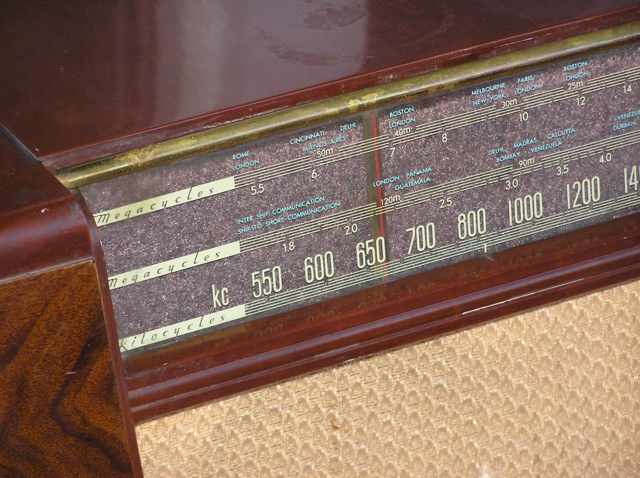






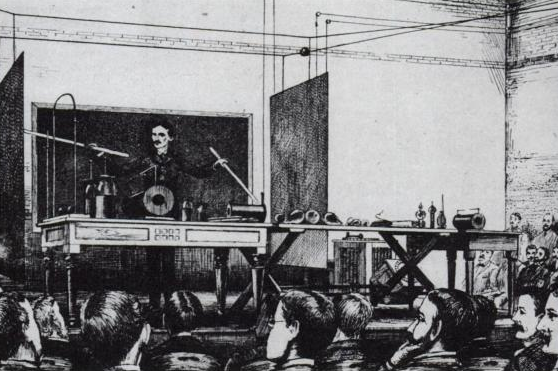







.jpg)

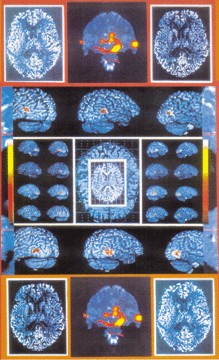
















_Technical_Division,_Indian_Head,_Md.,_demonstrate_how_radios_and_walkie-talkies_send_out_frequencies_that_could_detonate_IEDs.jpg/640px-US_Navy_090306-N-7090S-351_Personnel_at_the_Navy_Explosive_Ordnance_Disposal_(EOD)_Technical_Division,_Indian_Head,_Md.,_demonstrate_how_radios_and_walkie-talkies_send_out_frequencies_that_could_detonate_IEDs.jpg)
















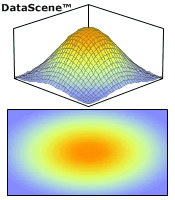

















 During stimulation, the applied electrical charge induces similar flows of multiple extracellular cations (K+,Na+ and Ca2+) in the electrode vicinity. This is rather counter-productive as these cations play varying roles in the initiation and propagation of action potentials. As a result, a significant percentage of applied electric charge is being wasted. Now, scientists at MIT and Harvard Medical School have
During stimulation, the applied electrical charge induces similar flows of multiple extracellular cations (K+,Na+ and Ca2+) in the electrode vicinity. This is rather counter-productive as these cations play varying roles in the initiation and propagation of action potentials. As a result, a significant percentage of applied electric charge is being wasted. Now, scientists at MIT and Harvard Medical School have  About 3 -4% of the general population has or will develop a cerebral aneurysm, with most are without any symptoms. Aneurysm is an enlarged area of a blood vessel that usually develops at a branching point of artery and is caused by constant pressure from blood flow. It often grows gradually and becomes weaker as it stretches. Rupture of a cerebral aneurysm causes bleeding into the brain, often leading to a stroke. Endovascular embolization using micro-coils has emerged as a successful preventive treatment for aneurysms. The micro-coils are made from platinum wire (thickness 20–120 μm) wound at diameters of 200–500 μm for length up to 50 cm. Once the coil is inserted through the artery into the aneurysm, it forms a randomly tangled globe that promotes clotting of blood, thus preventing further inflow of blood and pressure rise. In about half of implanted patients,
About 3 -4% of the general population has or will develop a cerebral aneurysm, with most are without any symptoms. Aneurysm is an enlarged area of a blood vessel that usually develops at a branching point of artery and is caused by constant pressure from blood flow. It often grows gradually and becomes weaker as it stretches. Rupture of a cerebral aneurysm causes bleeding into the brain, often leading to a stroke. Endovascular embolization using micro-coils has emerged as a successful preventive treatment for aneurysms. The micro-coils are made from platinum wire (thickness 20–120 μm) wound at diameters of 200–500 μm for length up to 50 cm. Once the coil is inserted through the artery into the aneurysm, it forms a randomly tangled globe that promotes clotting of blood, thus preventing further inflow of blood and pressure rise. In about half of implanted patients, As documented in other posts on this blog, mutliple neural prosthetic devices are currently being developed by startup companies throughout the US, Europe, and Asia. Practically all of these startups are pursuing the well-established R&D strategy of building a device to treat a specific neurological disorder and going through a lengthy process toward eventual FDA approval and reimbursement by private and government-run health insurance companies. In following with this R&D strategy, the resulting device is usually fully implanted and contains only the circuitry needed for its primary function to treat a specific disorder. The device is designed for autonomous operation without user accessibility, and any device’s software tuning/upgrade requires a physician and specialized clinical equipment. These features are aimed at limiting the manufacturer’s and surgeon’s liabilities.
As documented in other posts on this blog, mutliple neural prosthetic devices are currently being developed by startup companies throughout the US, Europe, and Asia. Practically all of these startups are pursuing the well-established R&D strategy of building a device to treat a specific neurological disorder and going through a lengthy process toward eventual FDA approval and reimbursement by private and government-run health insurance companies. In following with this R&D strategy, the resulting device is usually fully implanted and contains only the circuitry needed for its primary function to treat a specific disorder. The device is designed for autonomous operation without user accessibility, and any device’s software tuning/upgrade requires a physician and specialized clinical equipment. These features are aimed at limiting the manufacturer’s and surgeon’s liabilities.
 As the number of people with Alzheimer’s disease (AD) is rising with aging population, there is an increasing urgency in developing an effective approach to slow its progression. Despite the efforts by pharmaceutical companies, currently approved drugs provide only modest effects and are often difficult to target to the brain without avoiding the systemic side effects. A possibility of using electrical stimulation for combating the disease has not been considered until a serendipitous discovery
As the number of people with Alzheimer’s disease (AD) is rising with aging population, there is an increasing urgency in developing an effective approach to slow its progression. Despite the efforts by pharmaceutical companies, currently approved drugs provide only modest effects and are often difficult to target to the brain without avoiding the systemic side effects. A possibility of using electrical stimulation for combating the disease has not been considered until a serendipitous discovery The quest for highly functional neuroprosthetics in activities of daily living has implicitly assumed that the neural interface would include bothmotor and sensory (i.e. tactile and proprioceptive) functionalities. It is likely that for reaching and grasping tasks, the dynamic sensorimotor programs will need to be developed to enable dexterous control. Interestingly, the neural decoding, stimulation, and hardware principles for sensorimotor interfaces are often developed in isolation in motor-only or sensory-only studies. In this week’s issue of the journal Nature, a
The quest for highly functional neuroprosthetics in activities of daily living has implicitly assumed that the neural interface would include bothmotor and sensory (i.e. tactile and proprioceptive) functionalities. It is likely that for reaching and grasping tasks, the dynamic sensorimotor programs will need to be developed to enable dexterous control. Interestingly, the neural decoding, stimulation, and hardware principles for sensorimotor interfaces are often developed in isolation in motor-only or sensory-only studies. In this week’s issue of the journal Nature, a  As described in the
As described in the  Migraine is a highly prevalent neurological disorder, affecting more than 10% of people (6% of men and 18% of women) worldwide. It is not surprising, therefore, that all three of the major neurotech device manufacturers, Medtronic, St. Jude Medical, and Boston Scientific, have evaluated their implantable stimulators for treatment of his chronic condition. Multiple areas have been targeted for treating migraine; with most common ones being the occipital nerves and the cerebral cortex. The latter approach is usually accomplished non-invasively with the transcranial magnetic stimulation and is most helpful for patients whose migraines begin with an aura, a condition characterized by flashing lights or other visual (or sometimes sensory, motor or verbal) disturbance. The occipital nerve stimulation is more generally applicable to migraine sufferers, and involves a chronic implantation of the stimulating device. The clinical trials have been performed to see whether any of the devices could clear at least one of two FDA-mandated thresholds: a 50% reduction in migraine severity or a 50% reduction in migraine frequency. Boston Scientific’s pivotal trial PRISM
Migraine is a highly prevalent neurological disorder, affecting more than 10% of people (6% of men and 18% of women) worldwide. It is not surprising, therefore, that all three of the major neurotech device manufacturers, Medtronic, St. Jude Medical, and Boston Scientific, have evaluated their implantable stimulators for treatment of his chronic condition. Multiple areas have been targeted for treating migraine; with most common ones being the occipital nerves and the cerebral cortex. The latter approach is usually accomplished non-invasively with the transcranial magnetic stimulation and is most helpful for patients whose migraines begin with an aura, a condition characterized by flashing lights or other visual (or sometimes sensory, motor or verbal) disturbance. The occipital nerve stimulation is more generally applicable to migraine sufferers, and involves a chronic implantation of the stimulating device. The clinical trials have been performed to see whether any of the devices could clear at least one of two FDA-mandated thresholds: a 50% reduction in migraine severity or a 50% reduction in migraine frequency. Boston Scientific’s pivotal trial PRISM 
 In a
In a 
 The
The  The University of Michigan is developing a minimally-invasive low-power brain implant, termed
The University of Michigan is developing a minimally-invasive low-power brain implant, termed  In the
In the 













